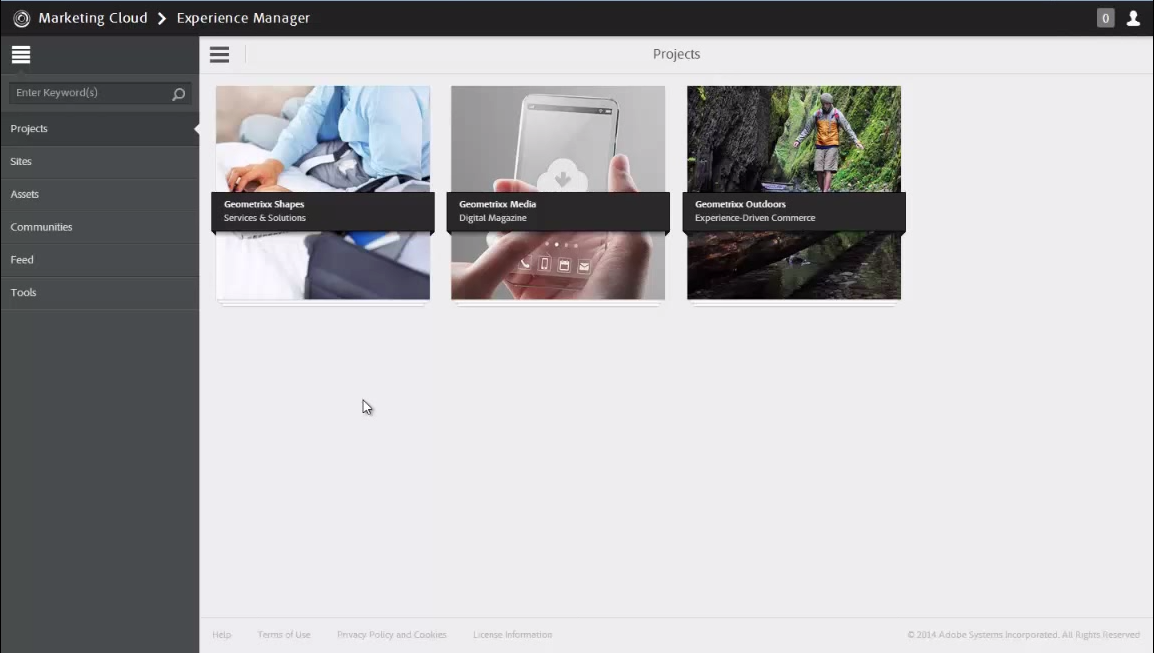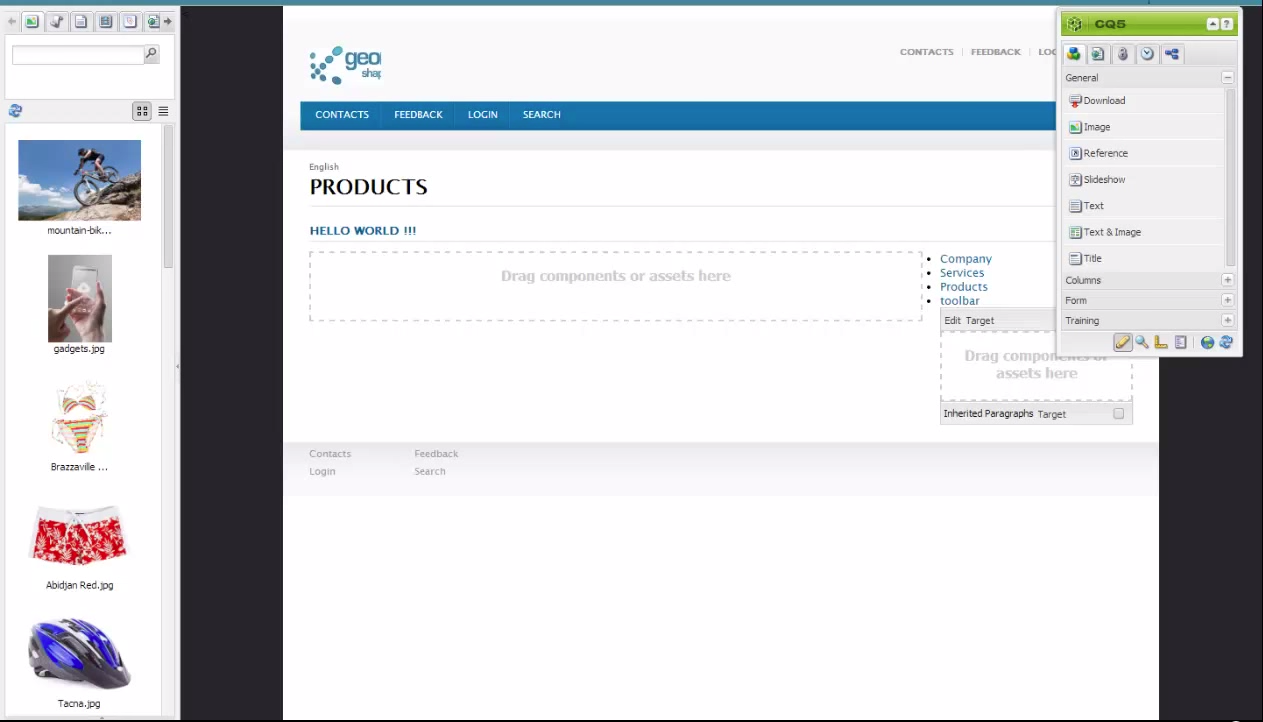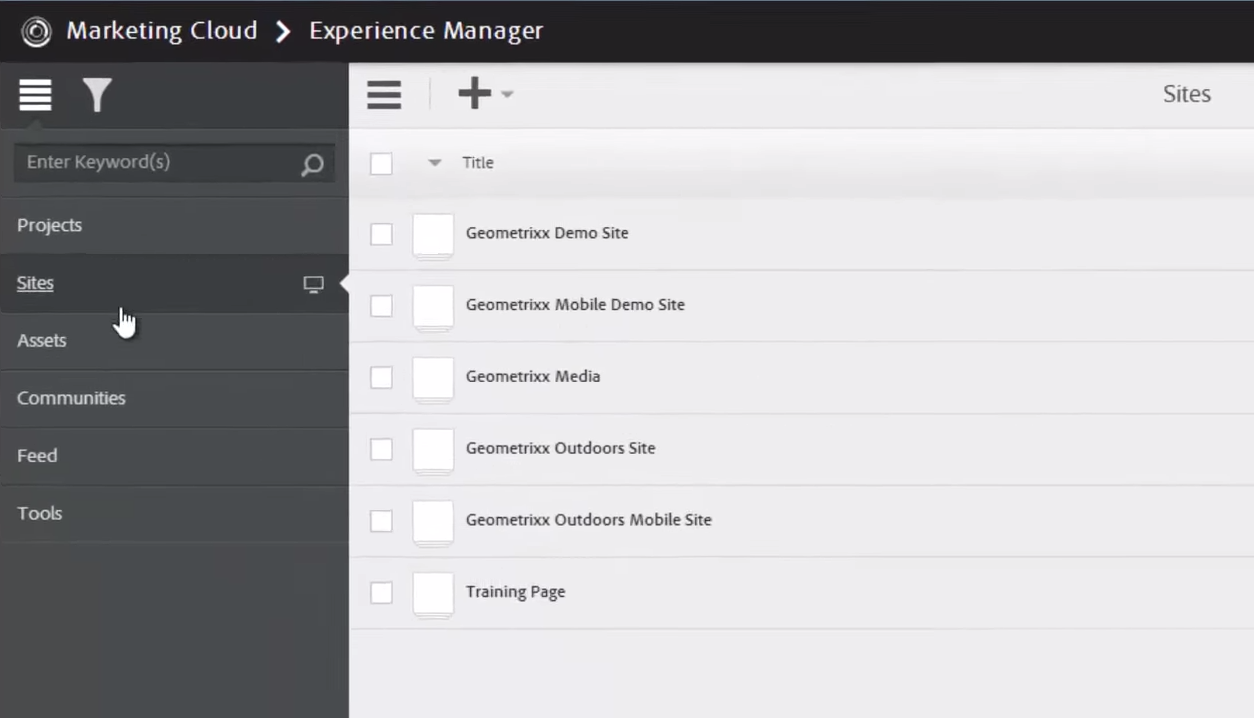

Unclaimed: Are are working at Adobe Experience Manager ?
Adobe Experience Manager Reviews & Product Details
Adobe Experience Manager is a cloud-based content management solution to help businesses create websites, mobile applications, and web forms. The AI-enabled platform lets content creators create, manage, and deliver marketing content to customers using machine learning algorithms. Additionally, it enables content designers to create, modify or publish web pages using the in-context WYSIWYG interface and drag-and-drop functionality.


( 1 )
| Capabilities |
|
|---|---|
| Segment |
|
| Deployment | Cloud / SaaS / Web-Based, On-Premise Linux, On-Premise Windows |
| Support | 24/7 (Live rep), Chat, Email/Help Desk, FAQs/Forum, Knowledge Base, Phone Support |
| Training | Documentation |
| Languages | English |




Compare Adobe Experience Manager with other popular tools in the same category.

The nice and user friendly content management UI.
Sometimes customization compromises speed.
Building and maintaining a large website that needs good cms. With AEM, not did it solved the problem but it has a lot of room for customization.
Best solution for uploading all your files to cloud and auto save to cloud in case if you are working on any PC r laptop and keeping the track of all files in cloud.
Nothing more but if it would integrate with azure or One Drive on user level then it will be good.
To use Adobe from anywhere.
Adobe Experience Manager (AEM) is a robust content management system (CMS) that empowers organizations to create, manage, and deliver exceptional digital experiences across multiple channels. Having extensively used AEM for various projects, I can confidently say that it is a powerful tool offering various features to enhance content creation, management, and personalization. One of the standout features of Adobe Experience Manager is its intuitive and user-friendly interface. The user experience is thoughtfully designed, making it easy for both technical and non-technical users to navigate and utilize its capabilities. Whether you're a content author, marketer, or developer, AEM provides a seamless experience streamlining content creation.
One drawback of Adobe Experience Manager (AEM) is its initial learning curve for new users. While the platform offers extensive documentation and resources, it can still be challenging for individuals unfamiliar with AEM to get up to speed quickly. The complexity of the platform and its numerous features may require a significant investment of time and effort to fully grasp and utilize effectively.
Adobe Experience Manager (AEM) solves several common problems related to content management and digital experience delivery, benefiting organizations in multiple ways: Centralized Content Management: AEM offers a centralized platform for managing and organizing digital assets and content. It eliminates the need for disparate systems and provides a unified solution for content creation, storage, and distribution. This streamlines the content management process, improves efficiency, and reduces the risk of content duplication or inconsistency. Multichannel Experience Delivery: AEM enables organizations to deliver consistent and personalized digital experiences across various channels, including websites, mobile apps, social media, and IoT devices. It provides a single source of content that can be adapted and optimized for different platforms, ensuring a cohesive and engaging experience for users regardless of the device or channel they use. Workflow Efficiency and Collaboration: AEM facilitates collaboration and enhances workflow efficiency through its robust content creation and review capabilities. It enables teams to work together on content projects, assign tasks, and track progress, improving communication and reducing bottlenecks. With features like version control and content localization, AEM streamlines the content production process and supports efficient collaboration among content creators, marketers, and developers. Personalization and Targeting: AEM empowers organizations to deliver personalized experiences to their audiences. It allows for granular segmentation and targeting based on user behavior, preferences, and demographic data. By tailoring content to individual users, organizations can enhance engagement, increase conversions, and foster long-term customer loyalty. Integration with Adobe Marketing Cloud: AEM seamlessly integrates with other solutions within the Adobe Marketing Cloud, such as Adobe Analytics, Adobe Target, and Adobe Campaign. This integration enhances the overall marketing ecosystem by providing a comprehensive set of tools for data analysis, personalization, and campaign management. The seamless data flow between these solutions enables organizations to gain valuable insights, optimize their marketing strategies, and achieve better results.
Good graphical interface and enterprise level security
Lack of online documentation and training materials
We used AEM as our CMS when switching from Sharepoint. We had more creative tools and control with AEM as well as executive buy in.
especially the part where we can see the actual input we provide with CMS on the preview page on that moment.
In the old version, the file directory was a little complicated but right now it's better.
I am managing a local website which is run by Global CMS for BMW that's why sometimes I need urgent actions where I can do it with CMS easily
The UX is easy for those on our large team with both little experience in website management, and years of experience with it. Training a new user normally takes upwards of just an hour or so.
The duplication and/or copy and paste function can be a little clunky. It takes some practice to learn how the pages will react to certain commands. Often a click of the "refresh" button will clear things up if you need to see where the page stands in preview.
AEM is providing uniformity for not just our company's three brands, but our entire nationwide collection of sister companies. I know that if I can edit and publish one of our pages, I can easily do the same for any of the brands across the nation.
It's easy to use. A lot of implementation of best practices in maintaining Content Management Systems are done in AEM.
I don't like that they have a hard time implementing some ui granite features. I needed to customize it in order to satisfy business requirements. The content fragment models are very limited to certain fields. I hope we can cutomize it more often like the cq dialog.
Managing and building websites for clients
It's one of the most useful tools from the Adobe suite to manage front end websites . It is user friendly once the user gets comfortable with using AEM. Drag and drop feature is very useful!
The UI can be improved. It can be complicated for a new user to navigate and know which tools and features are to be used. Easy pop ups mentioning the use of the feature will be helpful!
It solves the Web content management issue for us. We save time by using components for the various website pages just by authoring and publishing the content directly. It's easy to ensure streamlined content and regular updates
There are of course advantages to having all your ecommerce and web hosting needs powered by a single provider, and this is the main value proposition of Adobe Experience Cloud.
The interface isn't always the most intuitive and still feels like a work in progress in some respects. Users accustomed to CMS sites like WordPress will find those to feel much more streamlined.
We run a large-scale, robust ecommerce operation, and there's a need for a streamlined platform that encompasses both the shopping cart side of things and the static content portion. Having a GUI interface for less advanced users is crucial as well.
I love how the UX is. AEM lets the user organize their content in a great manner, starting by letting the user to create folders and data warehouses as easy as waking up in the morning
Some of the downsides fro AEM is that is sometime slow and when you manage a community as a HUB you need everytime that you publish articles and other kinds of content to be published ASAP
It helps me to centralize and put all content we need to publish out in the Marcel V-One HUB (private community) all in one single platform, which makes easier to manage the content pieces.





